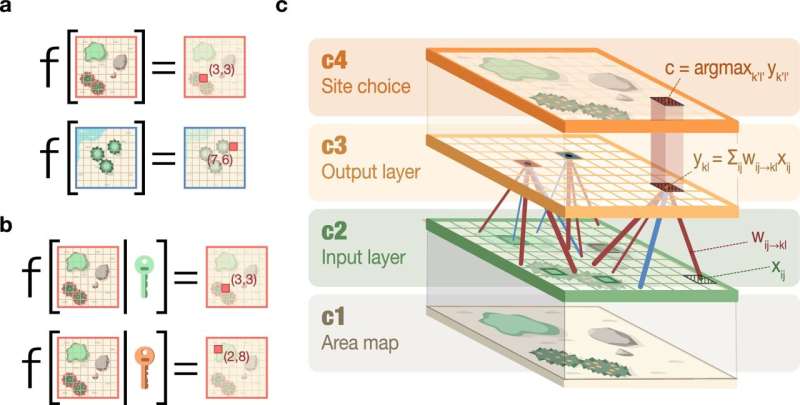This article has been reviewed according to Science X's editorial process and policies. Editors have highlighted the following attributes while ensuring the content's credibility:
fact-checked
peer-reviewed publication
trusted source
proofread
A new mechanism for animal food caching behavior discovered

New research from Hebrew University proposes a novel, non-memory-based mechanism for how animals cache and retrieve food. Instead of relying on memory, the researchers suggest that animals use a neural mechanism similar to hash functions in computing, which allows for efficient storage and retrieval of cache locations.
This is important because it challenges long-held beliefs about animal cognition and offers a more efficient explanation for how animals can manage thousands of food caches without overtaxing their memory systems.
The proposed mechanism could have far-reaching implications for our understanding of animal behavior, brain function, and even the development of new artificial intelligence systems. By providing a simpler and more scalable model for information processing in the brain, this research opens up new avenues for exploring cognitive processes in both animals and humans.
Researchers Dr. Oren Forkosh and Sharon Mordechay from the Department of Cognition and Brain Sciences and The Department of Animal Sciences at Hebrew University have published their study in Scientific Reports.
Revolutionizing understanding of caching behavior
Contrary to the long-held belief that scatter-hoarding animals rely on memory to retrieve cached food items, Forkosh and Mordechay propose a static mechanism similar to hash functions used in computing. Hash functions in computing are algorithms that convert input data of any size into a fixed-size string of characters, which typically represents the data in a unique and efficient manner.
The researchers' mathematical model aligns with the activity of hippocampal spatial cells, which respond to an animal's positional attention. The remapping ensures that these cells activate consistently across subsequent visits to the same area but differ between areas.
This remapping, combined with unique cognitive maps, generates persistent hash functions that can aid both food caching and retrieval.
The study presents a simple neural network architecture capable of producing a probabilistic hash unique to each animal, providing a virtually boundless capacity for encoding structured data.
The proposed framework involves a biologically plausible realization of hashing through a neural network. The input layer encodes key environmental landmarks, while the output layer designates food cache locations.
Both layers are arranged in a two-dimensional grid, with each cell corresponding to a specific location. The cache site is determined by the activity level of the output neurons, known as the cache score.
This innovative approach offers a new perspective on animal behavior and cognitive processes, suggesting that animals may use non-memory-based mechanisms for complex tasks such as caching. The findings could have broader implications for understanding brain functions and developing artificial intelligence systems.
More information: Sharon Mordechay et al, A non-memory-based functional neural framework for animal caching behavior, Scientific Reports (2024). DOI: 10.1038/s41598-024-68003-8
Journal information: Scientific Reports
Provided by Hebrew University of Jerusalem



















